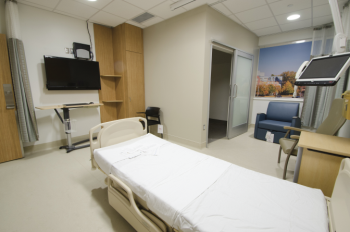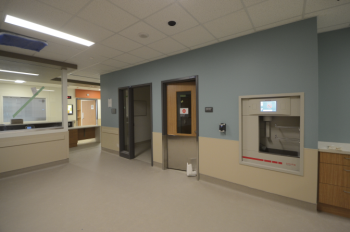Quality patient care, technology, and you

Humber River Hospital is proud to be building North America’s first fully digital hospital. It sounds impressive - and it will be impressive - but why build a ‘digital’ hospital and why will it be better for patients? The answer’s the same for both questions - maximizing the use of digital technology allows the hospital team to enhance patient care delivery.
For example, in the new hospital you’ll notice care providers using voice recognition technology to chart right at the bedside. Not only does this lessen the likelihood of transcription errors (insert doctor handwriting joke here), it also makes it immediately available on the patient’s Electronic Medical Record (EMR) for all other staff and physicians who are part of the patient’s care team. When information like this is shared across the system, to all appropriate care providers, in real time, tests can be booked more efficiently, and results can be available faster, so that treatment can start sooner.
Another advantage to the EMR - you won’t have to answer the same questions over and over at every stop in the care process. It’s one-stop information collection and sharing, with safeguards to protect your privacy. 
You may see the nurse using electronic barcodes at the bedside to check a patient’s medication. One swipe and the only door that opens on the medication cart is the one for that patient, pre-loaded by the ‘pill-picker’ in the pharmacy using other technology. The drug container for all other patient medications on that cart remain locked. This helps reduce the risk of medication errors.
If you’re admitted to the hospital, you will have a bedside terminal in your room – an easy to use touch screen computer with adjustable display options for visually challenged and elderly patients. It offers a wide range of communication, educational and entertainment tools for you to choose from. You can look at your EMR to see the nurse’s notes from earlier in the day; see when your next test is scheduled; order dinner from your individual menu that accounts for any diet restrictions; even darken the glass in the window – all from your bed.

Yes – even darken the glass from your bed.
Software on the terminal allows you to control the flow of low voltage electricity through the window glass itself.
This ‘electrochromic’, or dynamic, glass reacts to the current and lightens or darkens accordingly. So you control how much daylight gets inthrough your terminal (all inpatient rooms have outside windows in the new hospital).
In fact, the new Humber River Hospital has the world’s largest installation of dynamic glass in the world.
This same bedside terminal lets you connect with family and friends by phone, email, video or text messaging, and has a variety of entertainment options to help pass the time. And when a care provider comes in the room, their name and photo automatically shows up on your screen, so you always know who’s just come into your room.
As your care continues after leaving the hospital, you will be able to check in for appointments, receive reminders and review discharge information online, all from your home computer.
All of this means that as a patient you are at the centre of the care process like never before – with the ability for greater participation in all matters regarding your care, and ultimately to have more control over your hospital experience.
There’s some interesting stuff going on behind the scenes that you won’t see, but which really make a difference for your care team. For instance, 75% of all deliveries from food to medical supplies in the building are automated: delivered either by a hi-tech pneumatic tube system or by automated guided vehicles – robots.
Humber River’s Digital Vision is an ongoing evolution. As new technologies come available, we will adapt our systems and continue to implement projects that add value, increase efficiencies and further enhance patient care.
Becoming a digital hospital is the start of a journey that will lead to revolutionary changes in the way we deliver care. It’s a hospital built to be relevant not just on opening day, but for the 10, 20, 30 years after that.



















